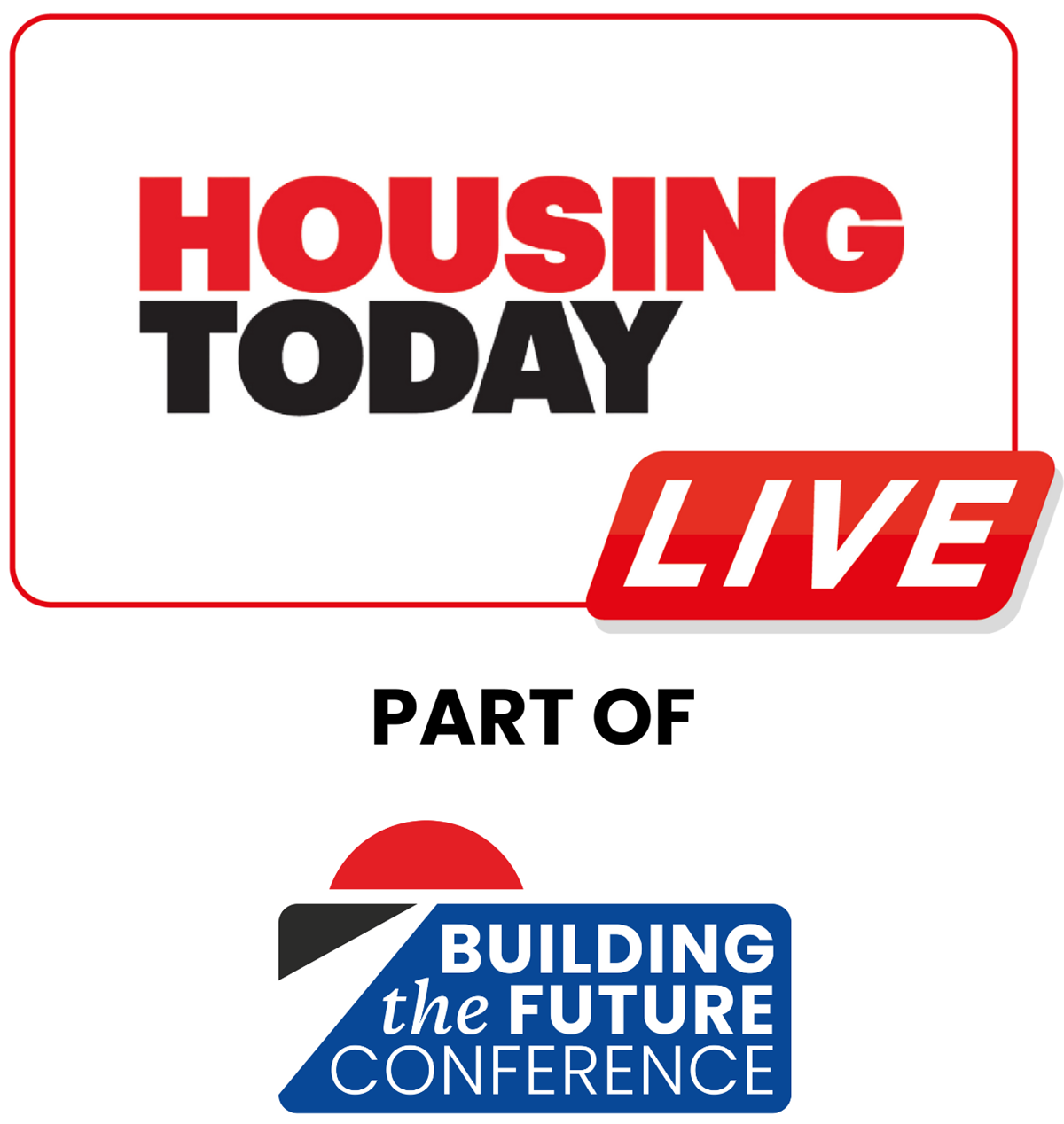In a housing market dominated by large-scale developments, the UK is peppered with smaller, often overlooked sites that fail to fit the mould of traditional delivery models.
These neglected garage plots, slivers of brownfield land and tucked-away industrial corners may only accommodate a few homes each, but collectively, they offer a powerful and underutilised opportunity.
Through the Small Site Aggregator, EDAROTH and AtkinsRéalis are changing the narrative - and making a convincing case for how strategic aggregation can deliver housing at pace, scale and with purpose.
“I am driven, with purpose by my anger, about the fact that people are living in impermanent, overcrowded and poor-quality housing, creating adverse childhood impacts that will impact their quality-of-life experiences long term,” says Zoe Metcalfe, client director, local and central government, buildings and places at AtkinsRéalis.
“We urgently need to recouple housing with health and wellbeing creation. That’s a fundamental part of our Nation’s resilience which underpins growth, enabling communities to thrive.”
Zoe Metcalfe, client director, local and central government, buildings and places, AtkinsRéalis
The Small Site Aggregator began life as a bold idea submitted to the UN-Habitat Smart Cities Challenge in collaboration with Bristol City Council.
The model seeks to optimise land use with the primary objective being to deliver social housing, with land unsuitable for homes to enhance climate resilience, embedding sustainable urban drainage (SuDS),nature integration to tackle the heat island effect or reduce the impact of excessive rainfall.
In addition this creates Neighbourhood Health by generating places for community, amenity and nature connection all contributing to health and wellness.

The small sites aggregator is underpinned by a digital tool which provides data and evidence-based outputs, informing better decision making and enabling roll-out on a regional and national scale.
Backed by deputy prime minister Angela Rayner as part of Labour’s housing strategy, the model seeks to unlock the additive power of sites deemed too small or complex for conventional delivery.
The case for aggregation
Traditional housebuilders tend to chase scale - targeting large, often greenfield, sites where uniformity and economies of scale bring cost efficiencies.
But small and irregular parcels of land don’t play well with that model. “These sites are problematic because they’re not efficient,” explains Mark Powell, managing director of EDAROTH.
“They’re usually landlocked, difficult to access, or require remediation. A six-home scheme doesn’t make economic sense for big developers - but combine ten of those, and you’ve got a pipeline of 60 homes. That’s when it starts to get viable.”
From a delivery perspective, aggregated portfolios allow for smarter procurement, more streamlined planning. Most crucially, the ability to deploy offsite manufacturing methods at scale, which fit well into the odd geometries and constraints inherent in these spaces
EDAROTH’s own factory-manufactured housing systems come with comprehensive BOPAS (including 100-year structural warranty) and NHBC accreditations , making them attractive to institutional investors seeking stable, long-term returns.
How it works
At its heart, the Small Site Aggregator is a triage model - a multidisciplinary team that assesses each site through a set of core lenses: social housing need, nature and biodiversity value, and climate resilience. This articulates the risk and tangible accounts for the value to unlock funding.
Zoe likens the approach to an A&E department: “You bring together different experts, working collaboratively to assess what’s needed where and deliver tailored, high-quality solutions that meet both local and national priorities.
“With a mutual understanding of the purpose and value, linked to quality of life, productivity and prosperity for everyone, a kind of ‘Hippocratic Oath’ for housing and community may be necesary. We have for too long decoupled the essential role of housing as the ‘health and wellness’ foundation stone underpinning our ability to thrive as a society.”
The methodology was first tested in Bristol, a city known for innovation in social justice and climate action.
About EDAROTH

EDAROTH is the offsite housing development subsidiary of AtkinsRéalis, dedicated to delivering high quality, net zero, precision engineered homes for social and affordable housing providers. This helps to generate enhanced quality of life experiences, meeting decent homes standards and long term asset life which iskey to securing institutional (pension fund) investment.
From early-stage site identification to finished handover, EDAROTH manages the full end-to-end delivery process—streamlining feasibility, design, manufacturing and construction through modern methods of construction.
Its developments achieve net zero in use, typically cut construction time by up to 50 %, and meet NHBC, BOPAS and Secured by Design standards for quality and safety
Rooted in lifecycle thinking, their digital-twin-enabled homes support long-term asset performance, enabling better maintenance, energy efficiency and lifecycle transparency.
There, the council owns a considerable volume of small, underutilised land. The Small Site Aggregator team developed a geospatial database and applied a consistent evidence-based approach to evaluate development potential.
The result wasn’t just a new list of housing sites, but a more cohesive vision for how infill development could enhance the city’s resilience.
Crucially, the model is tenure-blind, allowing for mixed-tenure outcomes depending on community needs and funding structures. As Powell notes, “We’re not here to buy land. We want to develop land in partnership, so the community retains the long-term value.”
A funding model that works
One of the major breakthroughs for the aggregator model has been its alignment with pension fund capital. Through collaboration with Lloyds Bank, the team created a funding mechanism where sites are leased - not sold - to investors for 40 to 60 years. Those assets then return to public ownership, still with decades of useful life left.
The consistency and quality of offsite housing is key to making this viable.
“You need investors to have confidence,” says Powell. “They want to know these homes are going to last, that they meet decency standards, and that they’re going to generate predictable returns. That’s what we offer.”
“We’re not here to buy land. We want to develop land in partnership, so the community retains the long-term value.”
Mark Powell, managing director, EDAROTH
Driving systemic change
The Small Site Aggregator doesn’t just challenge housing delivery norms; it calls for a cultural and systemic shift.
“We have to be brave enough to rewire the system, also to capture funding opportunities for non-residential land for climate and nature positive interventions” says Zoe.
“That means new tools, new partnerships and rethinking what good looks like, not just repeating past formulas.”
Procurement remains a key barrier, with current models still heavily favouring traditional approaches.
She says: “We worked with the collaborative government approved framework provider Pagabo to create a new procurement route that would recognise the value of modern methods of construction.”
Another challenge is local authority capacity.
“The traditional models of delivery are no longer fit for purpose in many cases,” Zoe adds. “If we want to meet our housing goals, we need fresh and integrated thinking embedded into the way local authorities operate and optimise their assets connected to public good outcomes.”
Teams are often stretched thin and siloed by their statutory duties.
“If we’re serious about delivering at scale and pace, we need dedicated triage teams working regionally, like a national A&E for small sites,” she argues.
But the appetite is growing. Alongside Bristol, combined authorities in Manchester, Liverpool and the West Midlands are also exploring the model. And as central government looks to hit its 1.5 million homes target, tools that can unlock new capacity without displacing traditional housebuilders will only become more valuable.
Complementing, not competing
Powell is clear: this isn’t about undercutting existing developers. “We’re operating in a space they’ve historically ignored,” he says. “And we’re bringing new SME capacity into the market to deliver it. That’s additive.”
In fact, the Small Site Aggregator could serve as a launchpad for SME growth - especially for those with advanced digital or offsite capabilities.
It also opens the door to new training and employment pathways, as Zoe highlights: “These are clean, safe, tech-led environments. We have the chance to upskill the workforce, improve inclusivity and create real community value.”
“This isn’t just about models and mechanisms. It’s about giving people a home.”
Mark Powell, managing director, EDAROTH
Looking ahead
The real opportunity for the aggregator model lies in national scaling - supported by clear leadership, joined-up data systems, and sustained political will. The groundwork has been laid. The model works. What’s needed now is coordination, at pace and scale.
Further evolution could see aggregator teams embedded regionally, creating a permanent capacity to support councils in identifying and delivering viable sites. With greater access to digital tools, integrated data and agile funding, the potential to deliver thousands more homes, Climate resilient and nature positive communities is not just plausible, but within reach.
“We’ve demonstrated that it can be done,” says Powell. “The next step is to operationalise it across the country. Because for every family living in temporary accommodation or stuck on a waiting list, this isn’t just about models and mechanisms. It’s about giving them a home within a community.”










